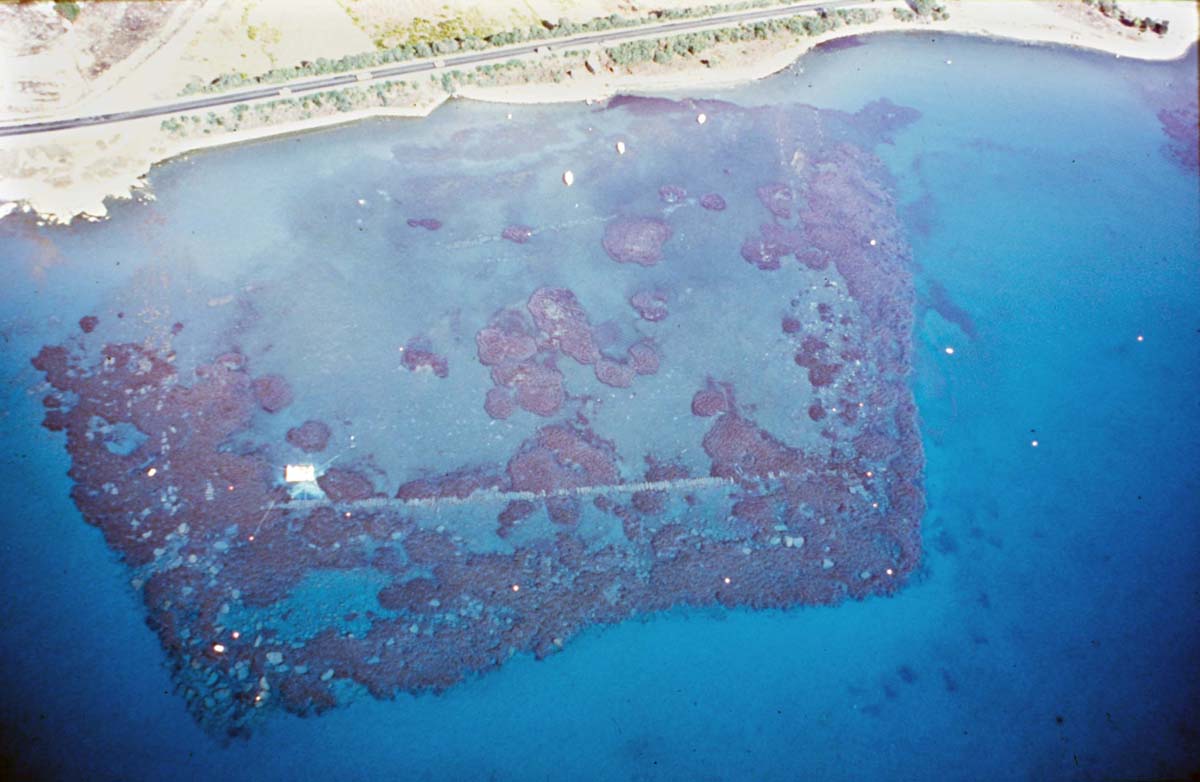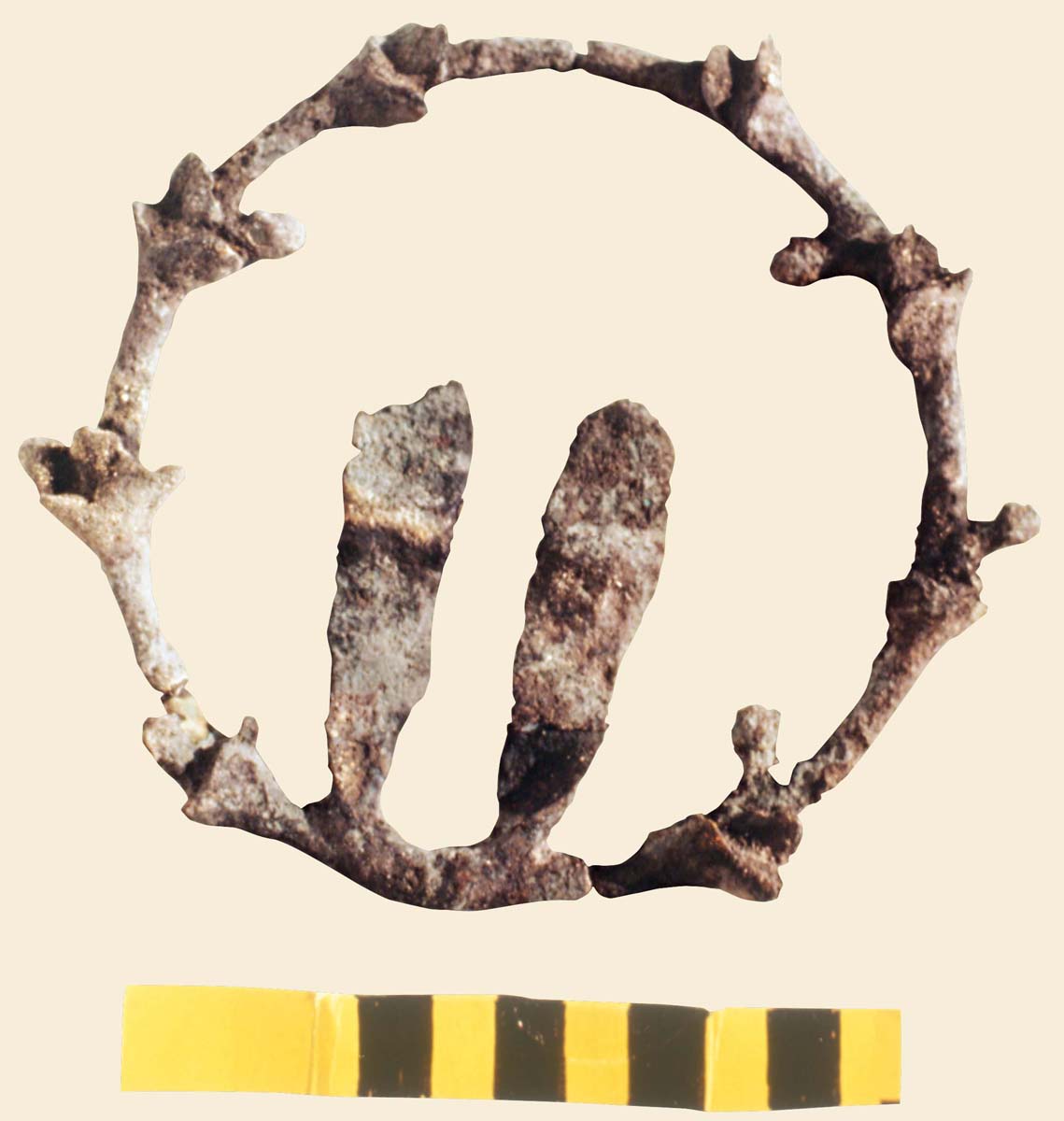The first underwater excavation of the outer harbour took place in the autumn of 1984 and was led by Jean-Yves Empereur. Quite visible in the aerial photographs, the exterior basin displays all the characteristics of a great naval base: the piers outline an impressive stretch of water, 180 meters wide and 100 meters long. Oriented towards a north-south direction, close to 3 m in width, the quays display a layout of a double or triple facing. The quays are made up of at least five, but most often seven, layers of plinth, the last of which serves as an adjustment plane to stabilize the overall construction. The near 5000 blocks used, most of which weigh between two and three tons each, have moved slightly over the centuries, owing to, among other factors, the force of tidal action. As of the first expedition, the archaeologists were able to establish a fairly precise chronology of the harbour’s construction, essentially due to the discovery amidst the rubble of stone, of a collection of potsherds characteristic of the Hellenistic period.

Aerial view of the harbour, 1984 (J.-Y. Empereur / Archives EFA, Y.857)
The investigations of the following year were partly devoted to the study of the port’s entrance. The channel, located to the east and about 20 meters wide, is linked up by a system of platforms, moles and basins.

Metal wreath, Hellenistic period (J.-Y. Empereur / Archives EFA, Y.870)
A last campaign was launched in 1986. The material that came to light confirmed the chronology proposed since the first excavation: certain coins discovered in the channel itself actually date back to the reign of Demetrius Poliorcetes who, along with his father Antigonus, took the title of king in 306 and had coins issued in his name after the naval victory over Ptolemy at the battle of Salamis. Therefore, the construction of the outer basin would undoubtedly be associated with the struggles waged by the Diadochi for control of Cyprus at the end of the 4th century.
![Early Christian amphora (S. Hartmann / Archives EFA, 12547 [8])](http://www.efa.gr/storage/2015/09/amathonte_12547-8.jpg)
Early Christian amphora (S. Hartmann / Archives EFA, 12547 [8])
Finally, the examination of the ceramics attests to the fact that the new port-infrastructures were operating only for a brief period of time, at the latest until the end of the 3rd century BC. An embankment dating to the Early Christian period (6th – 7th century AD) puts the seal on the whole.
L. Thély trans. A.M. Schroth-Daskalakis
